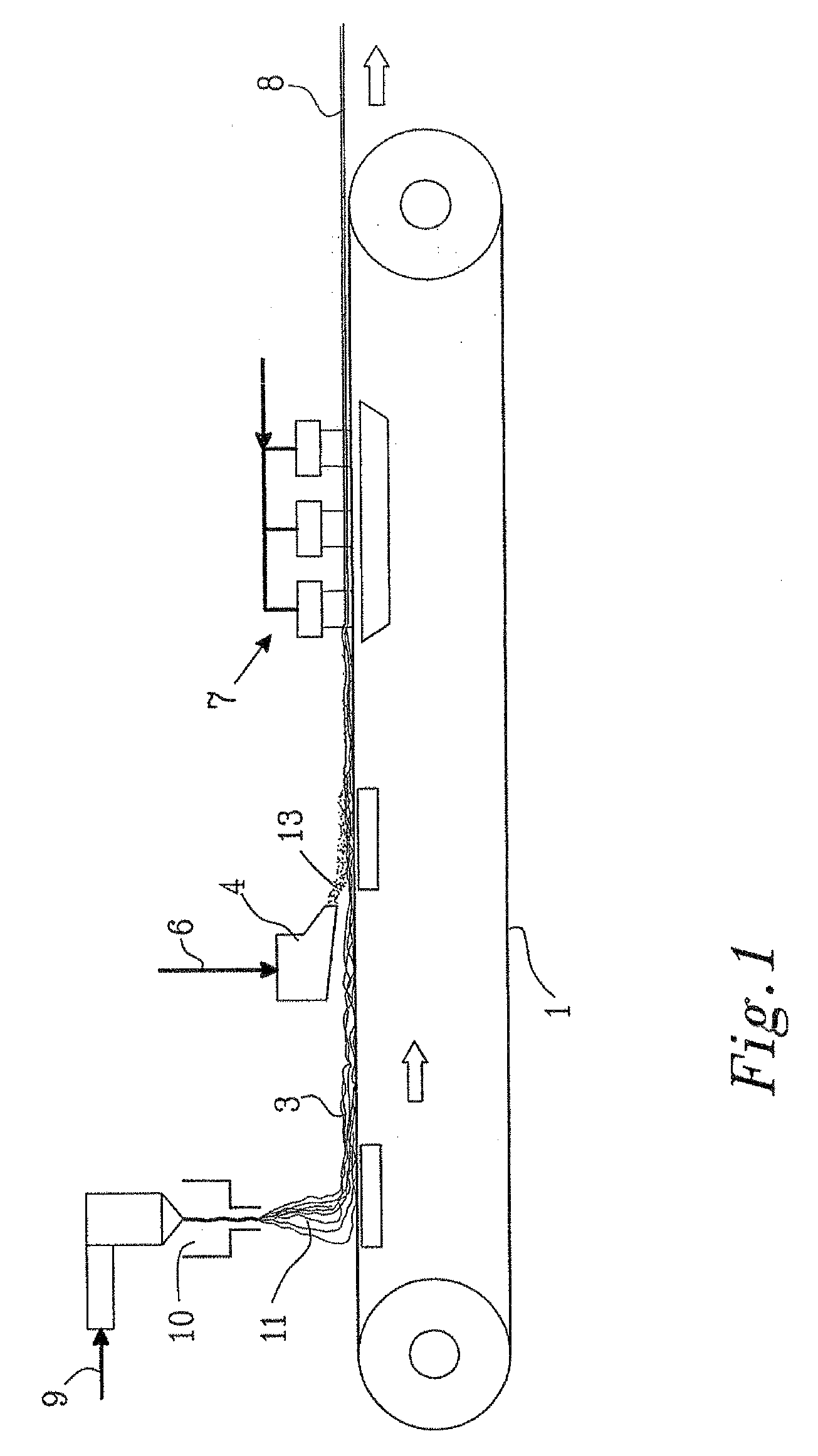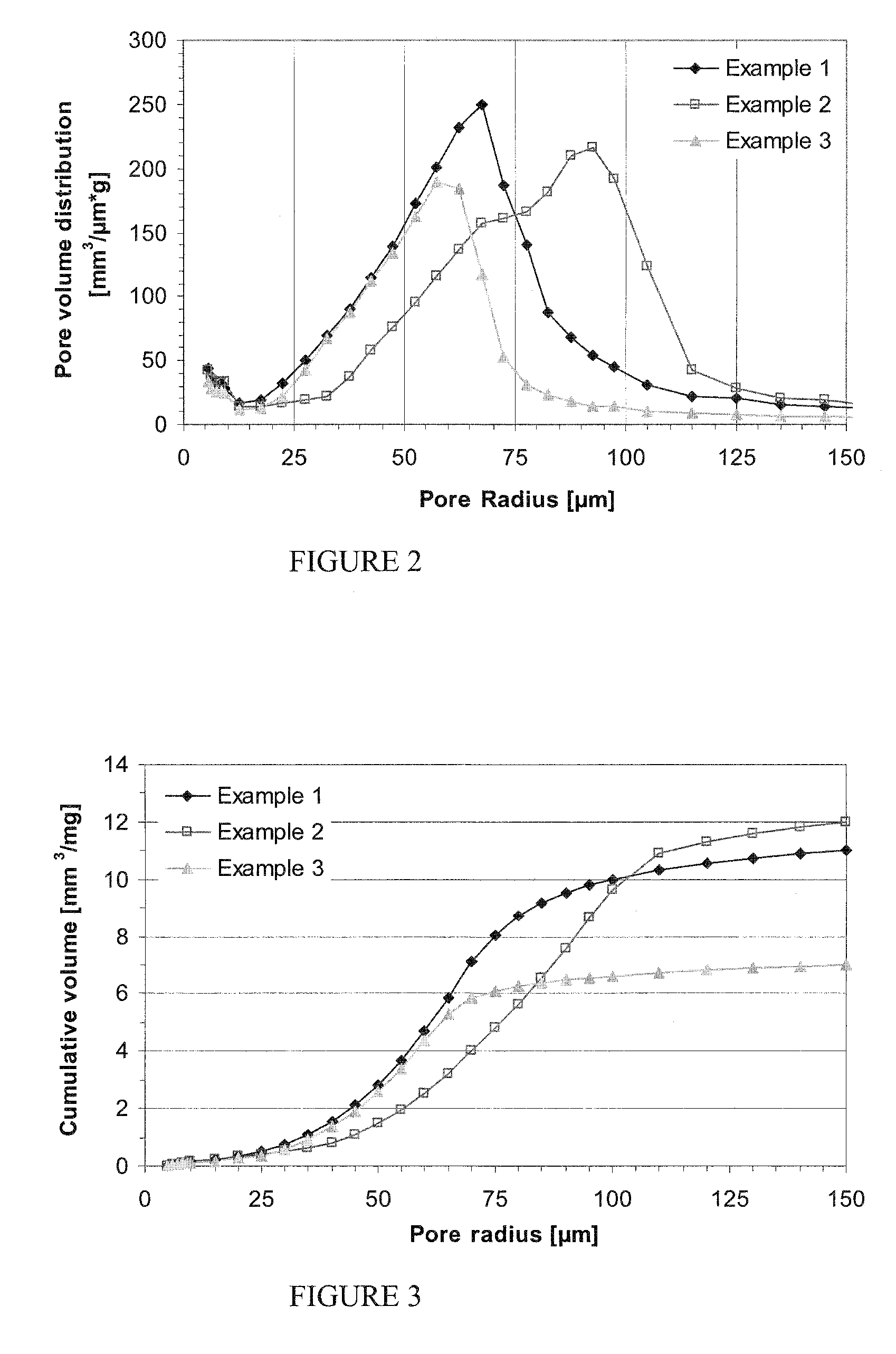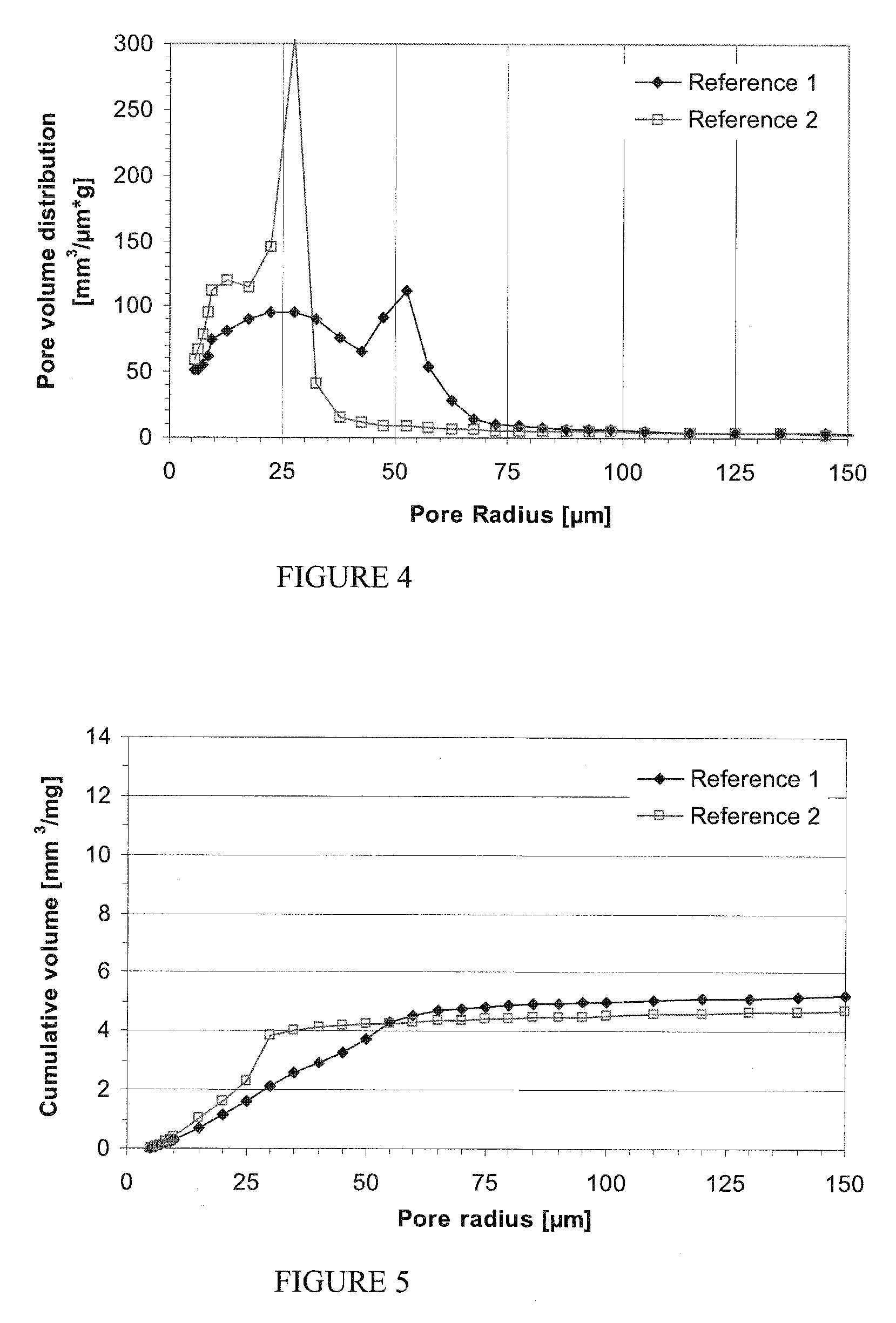Hydroentangled integrated composite nonwoven material
a non-woven material, hydroentangled technology, applied in the direction of weaving, woven fabrics, non-woven fabrics, etc., can solve the problems of less suitable for planned use, difficult to handle, incomplete release of wax from cloth,
- Summary
- Abstract
- Description
- Claims
- Application Information
AI Technical Summary
Benefits of technology
Problems solved by technology
Method used
Image
Examples
example 1
[0104] A 0.4 m wide web of spunlaid filaments was laid down onto a forming fabric at 20 m / min such that the filaments were not bonded to each other. By a 0.4 m wide headbox a fibre dispersion containing staple fibres was laid onto the unbonded web of spunlaid filaments and the excess water was drained and sucked off.
[0105] The unbonded spunlaid filaments and wetlaid fibres were then mixed and bonded together by hydroentanglement with three manifolds at a pressure of 5 -8 kN / m2. The hydroentanglement was done from the free side and the staple fibres were thus moved into and mixed intensively with the spunlaid filament web. The energy supplied at the hydroentanglement was 600 kWh / ton. Finally the hydroentangled material was dewatered and then dried using a through-air drum drier.
[0106] The total basis weight of the spunlaid filament-staple composite was around 50 g / m2.
[0107] The composition of the composite material was 50% spunlaid polypropylene filaments and 50% polypropylene sta...
example 2
[0108] The set-up of Example 1 was repeated with PET fibres from Kosa. The staple PET fibres used were 1.7 dtex with length of 19 mm. The total basis weight of the spunlaid filament-staple composite was around 60 g / m2.
example 3
[0109] The set-up of Example 1 was repeated with lyocell fibres from Accordis. The staple PET fibres used were 2.4 dtex with length of 12 mm. The total basis weight of the spunlaid filament-staple composite was around 70 g / m2.
Reference 1
[0110] The same set-up as in Example 1 was used for the reference materials.
[0111] A mixture of 5% polypropylene staple fibres, 1.7 dtex and 6 mm length from Steen together with 70% chemical vigor fluff pulp from Korsnäs was laid on 25% spunlaid polypropylene filaments of 2.1 dtex and hydroentangled.
[0112] The energy supplied at the hydroentanglement was 400 kWh / ton. The total basis weight of the spunlaid filament-staple-pulp composite was around 70 g / m2.
Reference 2
[0113] 50% of splittable bicomponent staple fibres was laid on 50% spunlaid polypropylene filaments of 2.7 dtex and hydroentangled. The splittable fibres were 5 mm long polyamide / polyester of 3.3 dtex before splitting from Kuraray. They nominally would split into fragments of 0.3 dte...
PUM
| Property | Measurement | Unit |
|---|---|---|
| pore radius | aaaaa | aaaaa |
| diameter | aaaaa | aaaaa |
| diameter | aaaaa | aaaaa |
Abstract
Description
Claims
Application Information
 Login to View More
Login to View More - R&D
- Intellectual Property
- Life Sciences
- Materials
- Tech Scout
- Unparalleled Data Quality
- Higher Quality Content
- 60% Fewer Hallucinations
Browse by: Latest US Patents, China's latest patents, Technical Efficacy Thesaurus, Application Domain, Technology Topic, Popular Technical Reports.
© 2025 PatSnap. All rights reserved.Legal|Privacy policy|Modern Slavery Act Transparency Statement|Sitemap|About US| Contact US: help@patsnap.com



